Full thickness skin graft
1. Introduction
Pre or post auricular skin grafts can be applied in the thin skin zones of the nose (dorsum, side wall or columella).

A full thickness forehead skin graft should be used in the thicker skin zones of the tip and ala.
It is often useful to delay application of a skin graft, regardless of site, for 10 days to allow initial granulation of the defect to improve skin graft neo-vascularization.
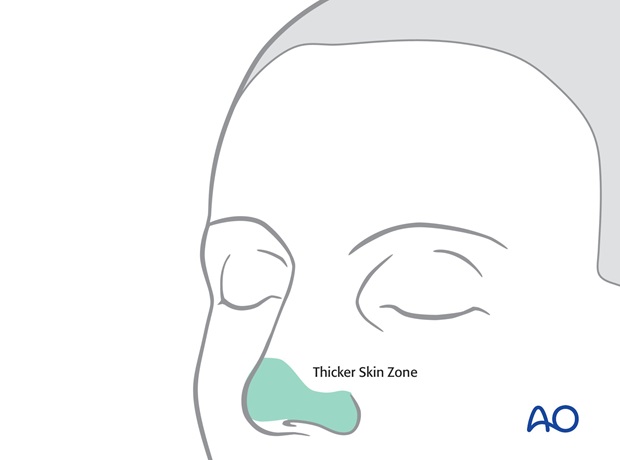
Principles of reconstruction
Skin grafts are unpredictable in color and texture due to the temporary ischemia required before skin graft “take”. But unlike flaps, they do not pincushion or rise above the surface of adjacent normal skin after healing.
The Subunit Principle is not applied to superficial defects which are resurfaced with skin grafts.
Anaesthesia
Smaller defect can be repaired under local anesthesia with or without sedation or general anesthesia.
2. Resection
If an initial excision is required to treat skin cancer, the tumor is excised utilizing standard excisional margins, verified by frozen section by the operating surgeon or by the Mohs technique.
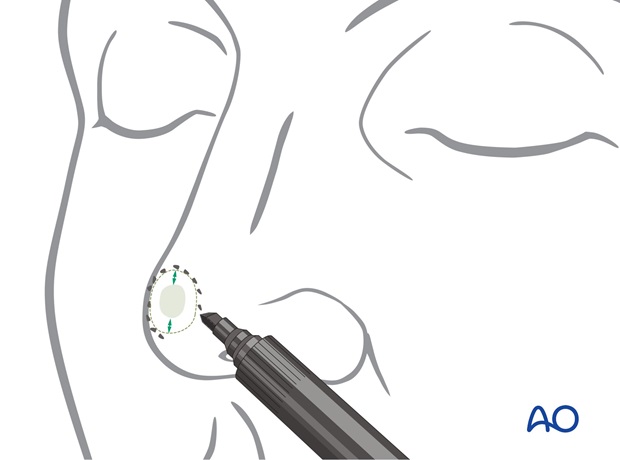
3. Reconstruction
Flap design
A template or pattern of the area marked for excision or the defect is outlined.
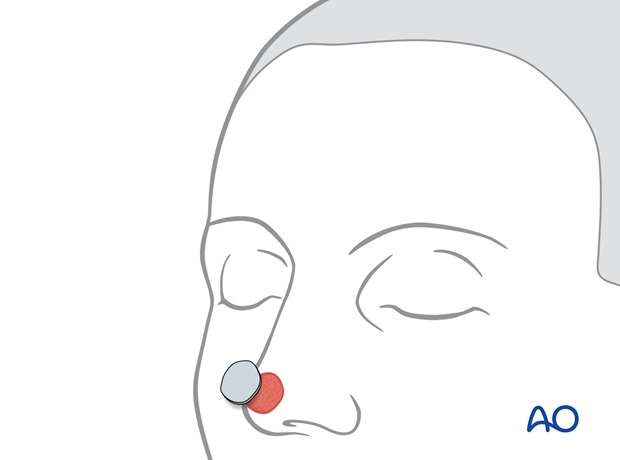
The template is positioned either in front or back of the ear, or under the forehead hairline and the skin graft marked with ink. Additional "dog ears" are also outlined.
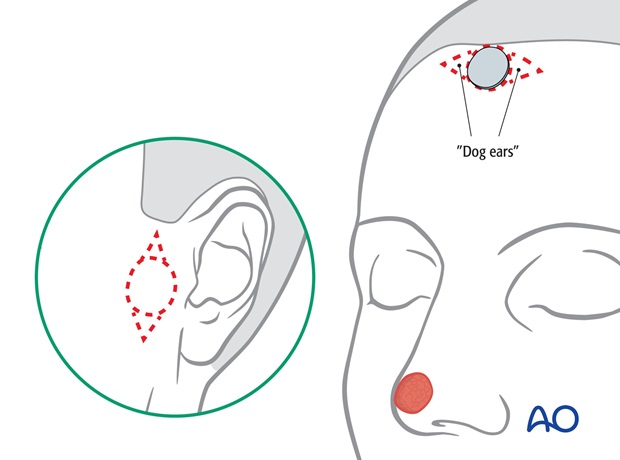
The skin is incised and the flap is harvested with the underlying subcutaneous fat to provide sufficient bulk to restore contour.
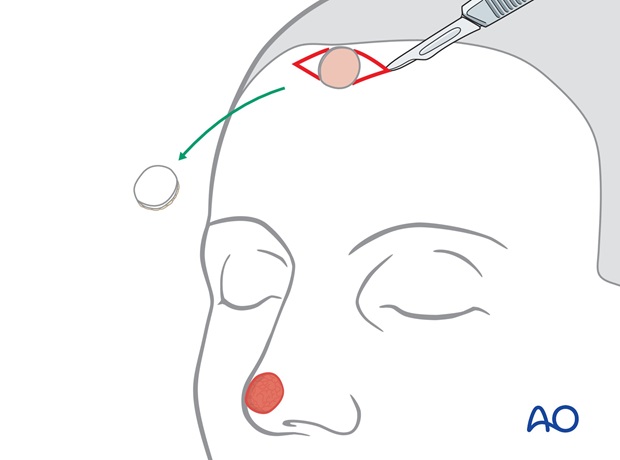
Closure of donor defect
The “dog ears” are excised.
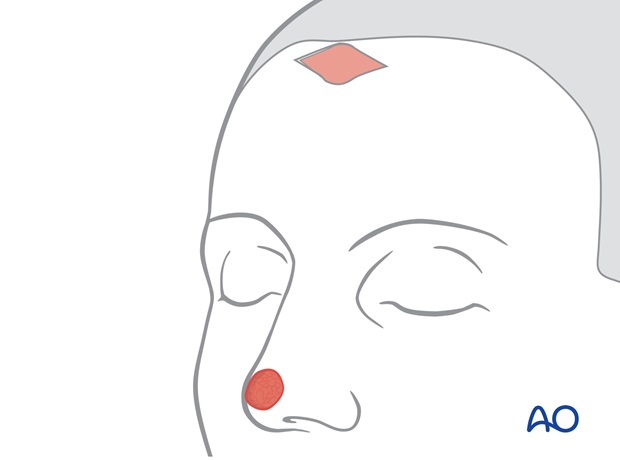
The skin surrounding the defect is minimally undermined.
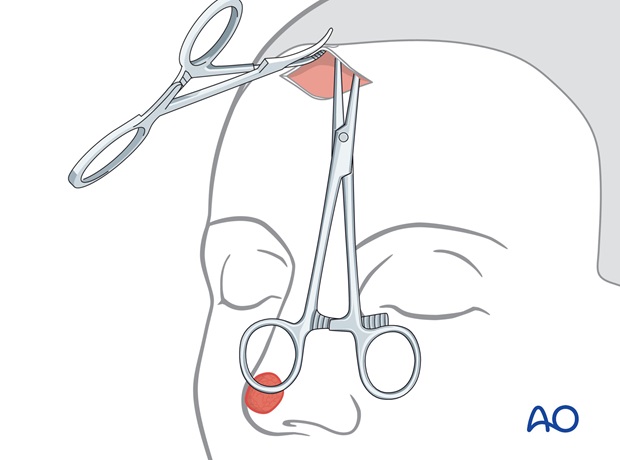
The forehead defect is closed in layers
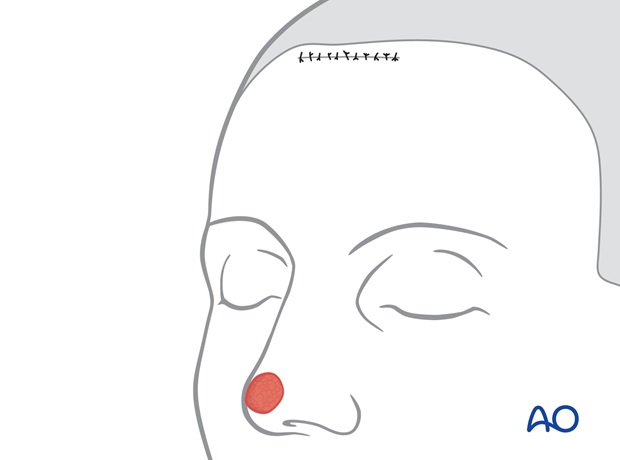
A clean surgical wound is prepared by excision of the wound edges and debridement of any injured tissues or granulation tissues.
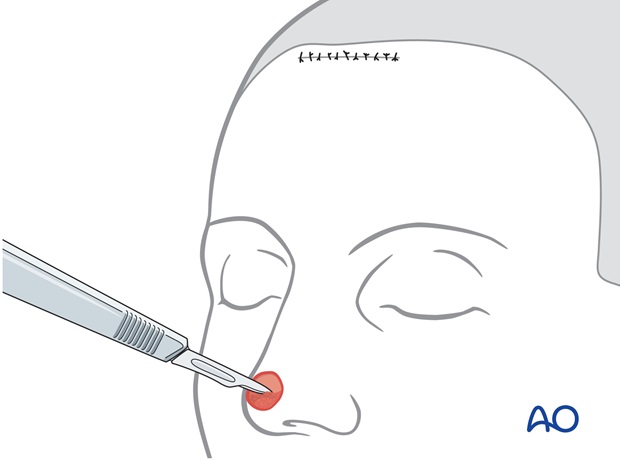
The skin graft is fixed to the defect with fine quilting sutures and a single layer of skin sutures.
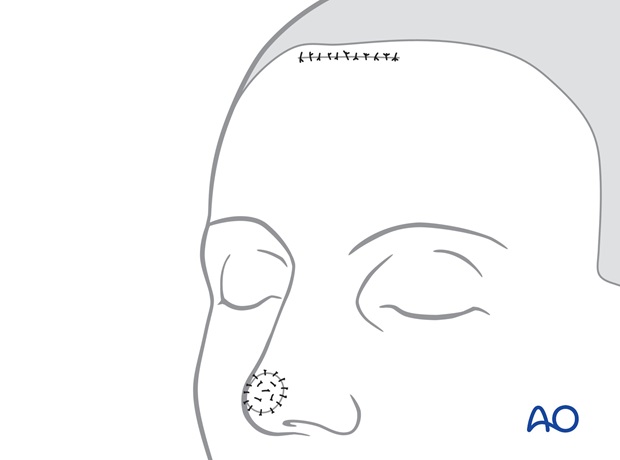
The area is covered with a non-adherent dressing and foam bolster, which is sutured in place. The dressing and sutures are removed after one week.
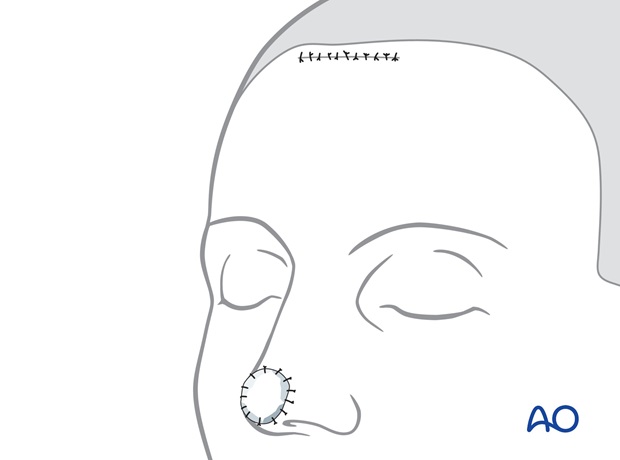
Revision surgery
Almost all major nasal reconstruction will require a revision procedure four months after the initial reconstruction to improve the final result.
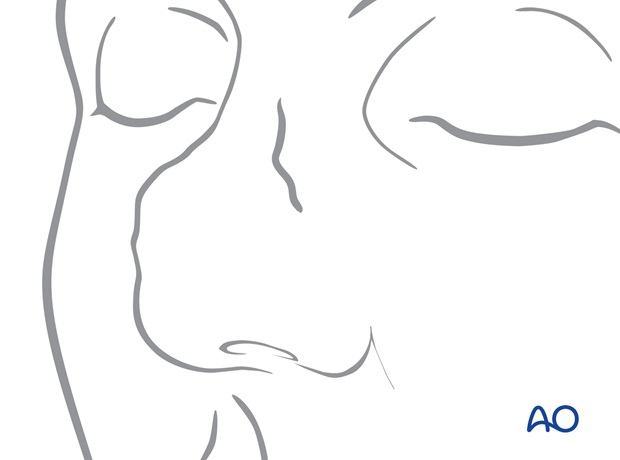
Case
Pre-and postoperative photographs of a small superficial defect repaired with a full thickness forehead skin graft.
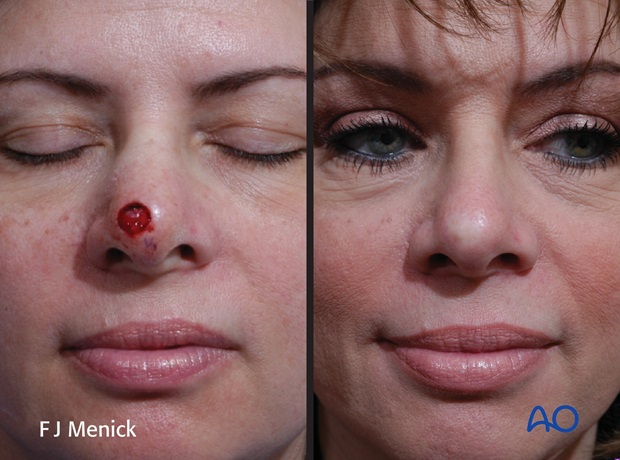
4. Aftercare following nose reconstruction
Skin graft
The bolus skin graft dressing should be kept dry. The forehead donor site can be washed within 24 h.
Forehead nasal reconstructions
Routine showering is permitted within 24 hours of all surgical sites. Dressings are worn at the discretion of the patient.
Quilting sutures are removed after 48h. Routine skin sutures are removed after 7 days. Sun exposure is avoided for several months after surgery.













